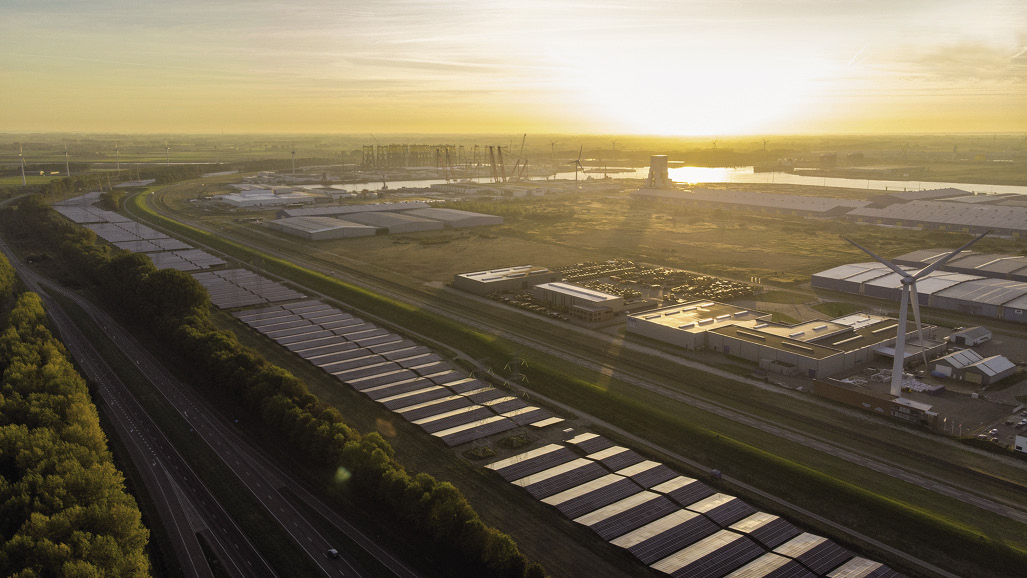The organization responsible for utility scale renewable energy projects in the Netherlands has announced the allocation of 4.02 GW of new capacity, with 2.95 GW of it solar.
Enterprise Agency the Rijksdienst voor Ondernemend Nederland (RVO) has revealed the results of the autumn 2018 round of the SDE+ program for large scale clean energy capacity.
Although the 4,411 PV projects awarded in the round account for almost 75% of the allocated capacity, they will require only 55% of the €6 billion budget devoted to the procurement exercise. The 758 MW of wind power capacity allocated in the autumn round will consume 31% of the budget.
The Dutch government earmarked €12 billion for the SDE+ program last year and the earlier, “spring round”, saw approximately 1.7 GW of solar projects selected by the RVO.
Regarding this year’s program, another 2.92 GW of PV projects have been submitted for the spring round, with the total capacity of renewables projects submitted reaching 3.5 GW. That means only around 580 MW has come from other clean energy technologies.
Deployed capacity figure revised up
The significant new capacity allocated was not the only good news for the Dutch solar market. At the end of last week, the nation’s Central Agency for Statistics (the CBS) revealed the newly installed PV generation capacity for 2018 was 1.5 GW, 200 MW higher than the 1.3 GW previously estimated.
That adds up to a cumulative PV capacity of 4.4 GW at the end of last year in the Netherlands. The CBS added, 20% of the solar capacity in the non-residential sector last year was in the form of solar parks, up from 9% in 2017. Some 444 MW of ground mounted PV plants were deployed in 2018, the new numbers revealed.
An impressive PV project pipeline
Dutch solar analyst Peter Segaar said the total PV capacity allocated under the SDE+ program adds up to a staggering 10.5 GW.
“Up till now, less than 2 GW of that volume has been actually realized, according to statistics from [national electricity transmission system owner] TenneT’s certification company, CertiQ,” Segaar told pv magazine. “Most larger projects will have to be realized within three years after subsidy allocation, smaller projects even have only one year and a half before the allocations will be withdrawn.”
Despite optimism raised by those numbers, Segaar warned problems have arisen due to the fast implementation of many commercial, and ever bigger projects. “It is, in particular, this solar park portfolio that may cause serious problems in regions where local grids never have been designed for transporting large volumes of electricity in the countryside,” said the analyst, who owns the polderpv.nl website. “In particular in [the] northeastern Netherlands, regional grid operator Enexis has serious problems with all the new capacity coming and it has, for example, temporarily closed almost half of the province of Drenthe for [the] acceptance of new contracts for electrical capacity for large capacity connections.”
In January, Dutch TSOs TenneT and Enexis said there was very limited capacity for more solar in the provinces of Groningen, Drenthe and Overijssel. Since then, several measures to increase grid capacity have been implemented but most, according to Segaar, will take time, particularly if regulatory restrictions cause delays. “Too long delays will endanger many SDE allocations that must be realized within one-and-a-half to three years’ time, unless regulatory measures will be taken to postpone deadlines for [the] realization of these projects,” he added.
Also in January, Dutch power company Liander – which serves the provinces of Gelderland and Noord-Holland and parts of Flevoland, Friesland and Zuid-Holland – said it expected some 6 GW of solar to be installed in its service area by 2023. It said it would ensure critical areas with strong solar development had enough redundancy in generation, transmission and distribution capacity.
Boom in prospect
Despite the grid issues and some resistance from communities against large scale solar, the Dutch PV market, Segaar predicted, will boom for years. He also pointed out, Dutch minister of economic affairs and climate change Eric Wiebes announced last week the country’s net metering rules for residential PV will be maintained until 2023.
The Netherlands is expected to reach 6 GW of installed solar capacity next year, and 20 GW by 2035, according to a recent report by research institute the Energieonderzoek Centrum Nederland.
The country, however, is still far from reaching its 14% renewable energy target for next year. At the end of 2017, renewables covered only 6.6% of electricity demand, giving the Dutch government another incentive to ensure the SDE+ allocated capacity – or at least a big proportion of it – has the right grid conditions to be connected in timely fashion.
This content is protected by copyright and may not be reused. If you want to cooperate with us and would like to reuse some of our content, please contact: editors@pv-magazine.com.




1 comment
By submitting this form you agree to pv magazine using your data for the purposes of publishing your comment.
Your personal data will only be disclosed or otherwise transmitted to third parties for the purposes of spam filtering or if this is necessary for technical maintenance of the website. Any other transfer to third parties will not take place unless this is justified on the basis of applicable data protection regulations or if pv magazine is legally obliged to do so.
You may revoke this consent at any time with effect for the future, in which case your personal data will be deleted immediately. Otherwise, your data will be deleted if pv magazine has processed your request or the purpose of data storage is fulfilled.
Further information on data privacy can be found in our Data Protection Policy.